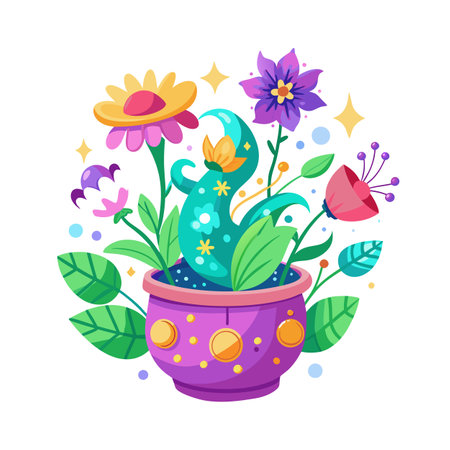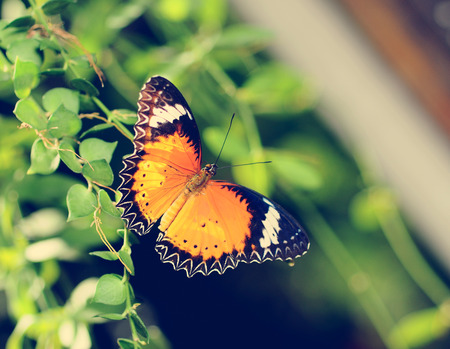1. Understanding Native Garden Visitors
In every corner of the UK, our gardens buzz and flutter with life, hosting a vibrant cast of native pollinators and wildlife. From the humble bumblebee to the chirpy robin, these visitors play vital roles in our outdoor spaces—not only adding joy to family gardening moments but also ensuring a healthy ecosystem. Pollinators like bees, butterflies, and hoverflies are essential for fertilising many of our favourite plants, including fruits and vegetables that grace our kitchen tables. At the same time, birds, hedgehogs, frogs, and even some insects act as natural pest controllers by feeding on slugs, aphids, and other common garden pests. By understanding who visits our gardens and how they interact—such as ladybirds munching on greenfly or song thrushes snapping up snails—we can make more informed choices about managing pests in ways that support, rather than harm, these helpful friends. Embracing this interconnected web of life not only nurtures local biodiversity but also provides endless opportunities for children (and grown-ups alike!) to learn from nature’s clever strategies right at home.
2. Identifying Pests versus Beneficial Insects
One of the most important steps in wildlife- and pollinator-friendly pest control is learning to tell the difference between garden pests and beneficial insects. In the UK, some bugs might nibble your plants, but others are quietly working hard to keep your garden healthy. Teaching children or curious gardeners to recognise who’s who can be both educational and fun, and it helps prevent accidental harm to helpful species.
Common UK Garden Pests
| Pest | What They Look Like | Signs of Damage |
|---|---|---|
| Aphids (Greenfly/Blackfly) | Small, green, black, or grey; cluster on stems or leaf undersides | Sticky residue (honeydew), curled leaves, stunted growth |
| Slugs and Snails | Soft-bodied, slimy, brown or grey; visible after rain or at night | Irregular holes in leaves, silvery slime trails |
| Cabbage White Caterpillars | Green caterpillars with faint yellow stripes; found on brassicas | Large holes in cabbage, kale or broccoli leaves |
| Vine Weevil Larvae | C-shaped, white grubs with brown heads in soil or compost | Wilting plants, eaten roots (especially container plants) |
Helpful UK Garden Insects (“Nature’s Little Gardeners”)
| Beneficial Insect | Appearance & Behaviour | Their Role in Your Garden |
|---|---|---|
| Lacewings & Ladybirds (Ladybugs) | Lacewings: delicate green wings; Ladybirds: red with black spots | Both eat aphids and other small pests—natural pest controllers! |
| Bumblebees & Honeybees | Fuzzy bodies, bumblebees often striped; honeybees smaller & golden-brown | Pollinate fruit, veg and flowers—vital for healthy crops and wildflowers. |
| Hoverflies | Look like small wasps but harmless; hover as they fly from flower to flower | Their larvae eat aphids; adults are excellent pollinators. |
| Ground Beetles & Centipedes | Sleek black beetles or many-legged fast movers under stones or logs | Eats slugs, snails and soil-dwelling pests—underground helpers. |
Tops Tips for Spotting Friends versus Foes:
- Look before you act: Examine what’s eating your plants—can you spot clusters of ladybird larvae rather than aphids?
- Nocturnal clues: Slugs and snails leave trails at night—try a gentle evening torch hunt with children.
- Pest patrols as family adventures: Turn identification into a mini-safari! Use a magnifying glass and let children draw what they see.
Avoiding Accidental Harm:
If in doubt, observe for a day before removing insects. Many “ugly” larvae grow into beautiful butterflies or helpful beetles. Encouraging observation teaches respect for all creatures and lets nature inspire us with its clever solutions—sometimes the best pest controller is already in your own back garden!

3. Encouraging Natural Pest Predators
Inviting nature’s own helpers into your garden is a wonderful, eco-friendly way to keep pests in check while supporting local wildlife and pollinators. By creating a welcoming environment for natural pest predators, you can let birds, hedgehogs, ladybirds, and other UK creatures lend a helping hand in maintaining the balance of your outdoor space.
Tips for Attracting Helpful Wildlife
Welcome Garden Birds
Set up bird feeders stocked with seeds or fat balls, especially during colder months when food is scarce. Plant native shrubs such as hawthorn or holly to provide shelter and nesting sites. A shallow bird bath offers a place for birds to drink and bathe, encouraging them to stick around and feast on slugs, caterpillars, and aphids.
Create Safe Havens for Hedgehogs
Leave a wild corner in your garden with piles of leaves or logs where hedgehogs can hibernate and forage. Avoid using slug pellets that can harm these prickly pest controllers. Consider making small gaps at the base of fences (about 13cm) so hedgehogs can wander between gardens safely—a lovely project for family teamwork!
Encourage Ladybirds and Lacewings
Lure ladybirds by planting pollen-rich flowers like marigolds, yarrow, or calendula. Install bug hotels made from bamboo canes or bundles of twigs to offer cosy spots for ladybirds and lacewings to overwinter. These insects will help munch through aphids naturally, keeping your plants happy.
Natural Diversity is Key
The more diverse your planting, the more likely you’ll attract a variety of helpful wildlife. Mix flowering plants with native trees and shrubs; leave some areas a bit wild; avoid chemical sprays which can harm both pests and their predators. By working alongside nature as a family, you not only support UK wildlife but also create magical moments of discovery together—watching a robin hop across the lawn or spotting a hedgehog at dusk!
4. Minimising Chemical Use
As parents and young explorers, we can make a real difference in our gardens and green spaces by choosing safer alternatives to chemical pesticides. In the UK, where bees, butterflies, and hedgehogs are part of our natural heritage, minimising chemical use is vital for protecting both pollinators and all sorts of garden visitors. Here are some practical ways you can reduce or swap out pesticides, making your patch a haven for wildlife.
Swap Chemicals for Nature-Friendly Solutions
The first step is to challenge ourselves: do we really need to reach for that spray? Many common pests can be managed with a little creativity and patience. Consider these UK-friendly swaps:
| Common Pest | Chemical Control | Safer Alternative |
|---|---|---|
| Aphids | Insecticidal sprays | Splash with a strong jet of water or introduce ladybirds |
| Slugs & Snails | Slug pellets (metaldehyde) | Copper tape, crushed eggshells, or beer traps |
| Caterpillars | Pesticide dusts | Hand-pick or encourage birds (like robins) to visit |
| Powdery Mildew | Fungicides | Prune affected leaves and improve air flow around plants |
Embrace Companion Planting and Diversity
Just as we love making new friends at the park, plants thrive when they grow alongside companions. Growing marigolds near tomatoes or nasturtiums beside beans helps keep unwanted insects at bay without resorting to chemicals. Mixing different flowers and vegetables not only creates a colourful garden but also attracts helpful bugs that eat pests.
Let’s Get Hands-On Together!
Encourage your children to join in the search for pests—make it a nature hunt! Gently remove slugs at dusk or collect caterpillars for observation before returning them far from your prized lettuces. This hands-on approach teaches respect for all creatures while keeping your garden thriving.
The Power of Patience and Observation
Sometimes, waiting is the best remedy. Often, pest problems resolve themselves as natural predators arrive. By observing closely with your children, you’ll spot beneficial insects like lacewings or hoverflies moving in to help balance the ecosystem.
By reducing our reliance on chemicals and embracing these family-friendly alternatives, we create safer spaces for pollinators and wildlife—nurturing both our plants and our children’s curiosity about the living world around us.
5. Creating Pollinator-Friendly Spaces
If we want our gardens and green spaces to be both beautiful and buzzing with life, it’s vital to give pollinators like bees, butterflies, and hoverflies a warm welcome—even as we tackle pests. Supporting these helpful creatures is easier than you might think, and can even make your pest control more effective in the long run.
Planting for Pollinators
First, choose a variety of native British plants that flower at different times throughout the year. This ensures a steady supply of nectar and pollen from early spring to late autumn. Consider favourites such as foxgloves, lavender, comfrey, and wild marjoram. Let your little ones help pick seeds or seedlings—watching them grow can be a magical experience for the whole family!
Leave Some Wild Corners
Don’t worry about keeping every inch of your garden perfectly tidy. A patch of long grass or a pile of old wood provides shelter and nesting spots for solitary bees and other beneficial insects. Let nature do its thing—sometimes a slightly “messy” area is exactly what pollinators need.
Choose Pesticides Wisely
If you must use pest controls, select those specifically marked as bee-friendly or apply them in the evening when pollinators are less active. Try companion planting—growing marigolds alongside vegetables, for example—to naturally deter unwanted insects without harming our pollinator pals.
Get Children Involved
Encourage children to spot visiting butterflies or count bumblebees on blossoms. These little moments not only nurture curiosity but also help them understand the value of each tiny garden guest.
Water and Shelter Are Key
A shallow dish with pebbles makes a safe drinking spot for bees and butterflies alike. Installing bug hotels or simple log piles gives overwintering insects somewhere cosy to rest.
By weaving these small changes into your gardening routine, you’ll create a thriving habitat that supports pollinators—and keeps harmful pests at bay—the natural way.
6. Safe Application of Organic Methods
As we wrap up our journey towards a wildlife- and pollinator-friendly garden, it’s important to remember that even natural and organic pest control methods need thoughtful application. When you’re looking out for bees, butterflies, hedgehogs, and the little hands and paws of children and pets, safe practices are key.
Choose the Gentlest Solutions First
Always start with the least disruptive approach. Hand-picking pests or using barriers like netting is often enough to protect your plants while keeping everyone safe. If you do need to use an organic spray—such as neem oil, soapy water, or garlic spray—be sure it’s labelled as suitable for UK gardens and doesn’t pose harm to pollinators.
Timing Is Everything
Apply treatments early in the morning or late in the evening when bees and other pollinators are less active. This helps prevent accidental contact with beneficial insects. Remind your little helpers that patience is part of gardening—and that sometimes waiting for the right time makes all the difference!
Spot Treatment Over Blanket Sprays
Rather than spraying your whole patch, focus on affected areas only. This targeted approach protects healthy parts of your garden and limits exposure for wildlife, children, and pets who love to explore among the leaves and flowers.
Safe Storage and Disposal
Keep all pest control solutions—natural or otherwise—safely out of reach of curious hands and paws. Store them in clearly labelled containers in a secure shed or cupboard. When disposing of leftover mixtures, follow local council guidelines to avoid harming local waterways or habitats.
Garden Together, Learn Together
Involve your children in these safe gardening routines. Teach them why you’re careful about when and where you apply sprays, how to spot friendly insects versus pests, and the importance of sharing your garden with wildlife. Not only does this nurture their respect for nature, but it also turns each task into a treasured family memory—growing together just like your garden does.


